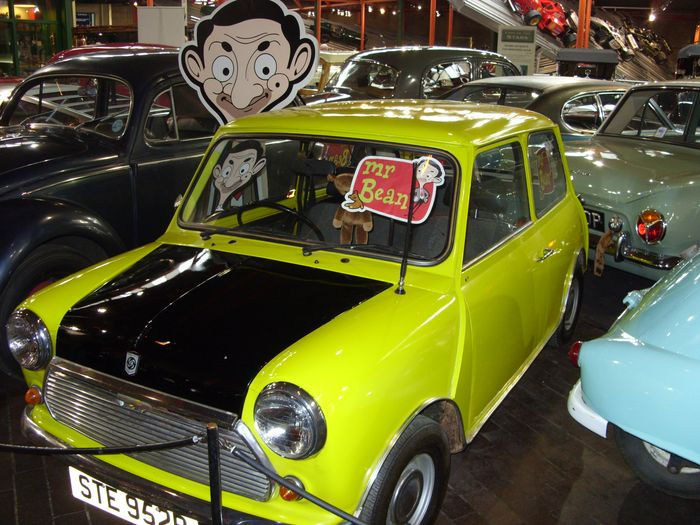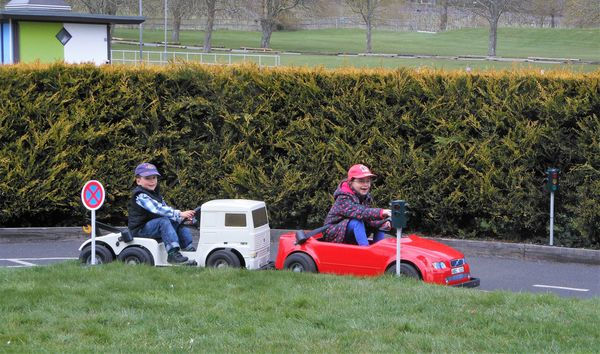BEAULIEU: SPIES, CARS AND A VICTORIAN MANOR IN THE NEW FOREST
- Sarah

- Apr 3, 2022
- 6 min read
Updated: Apr 5, 2022
Beaulieu Palace is a large country estate in Hampshire in the south of England. Surrounded by the New Forest and just a few miles from the sea, the area is an unspoilt corner of rural England. The palace and grounds are open to the public and contain the world famous National Motor Museum, extensive grounds, a museum to the World War II spies who trained there, several exhibitions and a monorail, with part of the house open to the public too. It makes for a fascinating, and full, day out in the country which will appeal to all ages.

Photograph © Beaulieu Enterprises
A BRIEF HISTORY OF BEAULIEU
Beaulieu Abbey
The land around this peaceful riverside forest was once used for a royal hunting lodge, before the construction of a Cistercian abbey in the 13th century, founded by King John. It was a huge and magnificent place to befit its royal status, central to which was a large church 102 metres long in a large cruciform shape which took over 40 years to build. Other buildings in the estate included a cloister, chapter house, infirmary, refectory, kitchens, storehouses, farm buildings, guesthouses, a mill, fishponds and vast gardens. Gatehouses controlled entry, with a water gate to allow ships to access the site. For centuries the abbey thrived under its special status, answerable only to the Pope, until the Dissolution of the Monasteries in the mid 16th century.
The abbey and 8,000 acres of land were eventually sold to Thomas Wriothesley, 1st Earl of Southampton. He gave the former refectory to the people of the village to use as their village church, which they still do today, demolished the abbey church and turned the former Great Gatehouse into a modest manor house. This, after much extension and adaptation, is the Palace House you see today, and his descendants still live in it over 400 years on.
World War II
During the war, the house acted as a ‘finishing school’ for agents from Group B of the SOE (Special Operations Executive) whose purpose was to conduct espionage, sabotage and reconnaissance across occupied Europe and to aid local resistance. 3000 agents were trained in what was known as ‘Churchill’s Secret Army’.

Spies from all Allied nations were taught silent killing, housebreaking, safe-blowing, forgery, sabotage, survival techniques, how to resist interrogation, how to use secret inks, coding, black propaganda and a whole host of other nefarious skills. Such was the secrecy that neither the Montague family or the local villagers knew anything about what was going on.
Violette Szabo was one agent who trained at Beaulieu, where she learnt escape and evasion, uniform recognition, communications and cryptography, as well as receiving further training in weaponry. She is the agent commemorated on the Monument to the SOE in London, a woman who died to protect the French Resistance leaders she was with on a mission, and who was later executed in a concentration camp. She is commemorated in the war memorial at Brookwood Military Cemetery, along with other members of the SOE.
Post War
Tourists have been visiting the site of the abbey since 1912, and in 1952, Edward, Lord Montagu also opened the Palace House and Gardens to the public, making Beaulieu one of the first stately homes to admit visitors. For the grand opening, he displayed five veteran cars in the entrance hall in tribute to his late father, John Douglas-Scott-Montagu, who was a motoring pioneer. This led to the creation of the National Motor Museum, the first permanent motor museum in the world and which is one of the top five across Europe.
WHAT THERE IS TO SEE ON A VISIT TO BEAULIEU
The National Motor Museum

The Museum has over 285 vehicles, the oldest dating from 1875 and includes some amazing cars of all varieties. Some of the older cars are beautiful and immaculately preserved.
There are cars from Formula One, four land speed record breakers including Sir Malcolm Campbell's 1920 Sunbeam, his son Donald Campbell's 1961 Bluebird-Proteus, and cars from popular films and TV shows, such as Chitty Chitty Bang Bang, the Reliant Robin of Trotters Independent Traders, Mr. Bean's green mini and more. The museum has a lot more than just cars though, with a recreation of an old 1930s garage, an interactive exhibition on the evolution of cars and plenty more. There is also an exhibition of James Bond cars.
The Secret Army Exhibition
The SOE museum is tucked away in the grounds in the small unassuming, original building and is called The Secret Army Exhibition. It is packed with spy equipment, such as everyday items like dominoes and hairbrushes, all with secret compartments or a pen with a hidden compass and maps.
Photographs © Beaulieu Enterprises
There are exhibits of the more brutal side of their work, with knives and knuckle dusters, as well as a lot of information about the spies how they were trained, techniques used and how they died, as it was a dangerous job and at one point SOE radio operators had a life expectancy of just six weeks. The exhibition is well laid out, thoroughly absorbing and is manna from heaven for war historians.
Remember before God those men and women of the European Resistance Movement who were secretly trained in Beaulieu to fight their lonely battle against Hitler's Germany and who before entering Nazi occupied territory here found some measure of the peace for which they fought.
The World of Top Gear
Other attractions in the grounds include a huge Top Gear exhibition with a room built just like the original stage set (the Enormodrome) and plenty of the beaten and battered relics that the presenters destroyed during filming. The display is kept right up to date and includes exhibits from the current series as well as previous ones.
The Palace House
The Palace House is lovely for a stately home - not too grand and one you can imagine actually living in without feeling like you are rattling around in it. It is mostly Victorian, as the family didn't start living here permanently until the mid 1800s. It includes a wonderful restored Victorian kitchen and a library which is accessed through a false bookshelf door.
The Abbey
The abbey ruins have been carefully conserved and there is still quite a lot to see. The ground plan of the 102-metre-long church can be seen with the position of the altar marked by a cross and trees.

The Domus, once the lay brothers' refectory and lodgings, is now home to an exhibition of monastic life before the Dissolution and which tells the story of the Abbey. The parish church, once the refectory, is a sweet little church which you can visit, and there are substantial ruins of other buildings as well as the cloisters, which is planted with herbs.
The Monorail and Vintage Bus
Another first for the estate is its monorail, which is the oldest in England. This mile long track with two stations gives you a birds eye view over the grounds, and even runs right through the motor museum.
Monorail photograph © Beaulieu Enterprises
There is also a replica of a 1912 open top London bus which you can use to get around the site between two bus stops.
The Palace Grounds
The grounds are a good place for a walk, particularly if the sun is out. There is a Victorian Flower Garden, Victorian Kitchen Garden laid out as it was in 1872 with an old vine house, an Alice in Wonderland garden, a Wilderness Garden and a walk around the old Mill Pond where you can see a memorial cairn to William Rufus who was killed nearby (at the Rufus Stone in the New Forest), and some brilliant tree carvings.

The grounds also contain assorted play parks for youngsters, with an adventure play park complete with zip wire, climbing wall and rope maze amongst other appealing attractions for kids.
The site also has a restaurant and a large gift shop.
Beaulieu is a great place for a full day out but there are lots of other sites to see while you are in the area. Just a mile away is Buckler's Hard, a beautiful riverside village with a Maritime Museum, living history, river cruises and more. Only 5 miles away is Lepe Beach - a golden sandy beach where you can still see plenty of relics from the D-Day landings. Inland is the New Forest with all of its many attractions.
Visiting Beaulieu Palace House and Gardens
Opening hours
Open every day except Christmas Day from 10am
Ticket Prices
Adults: £23
Children aged 5-16: £12
The above prices are if you book tickets online the day before your visit
Concessions and family tickets available
How to get there:
Train: The London to Weymouth train passes regularly through Brockenhurst, which is the closest main line station to Beaulieu. There is a taxi rank at the station and the cost of a journey to Beaulieu by taxi is approx £20. Alternatively, why not hire a bike and cycle the seven miles through the New Forest to Beaulieu? Cycle hire details can be found on the New Forest National Park cycle hire information website.
Bus: The New Forest Tour’s Green Route links Beaulieu with Hythe Ferry (for Southampton), Lyndhurst, Brockenhurst (rail station) and Lymington. Tickets are valid all day on all routes and you can hop on and off wherever you like. For timetables and ticket information click here.
Car: Come off Junction 2 of the M27 and head south on the A326. There is free parking on site.
Book your Beaulieu tickets here >>

















Comments